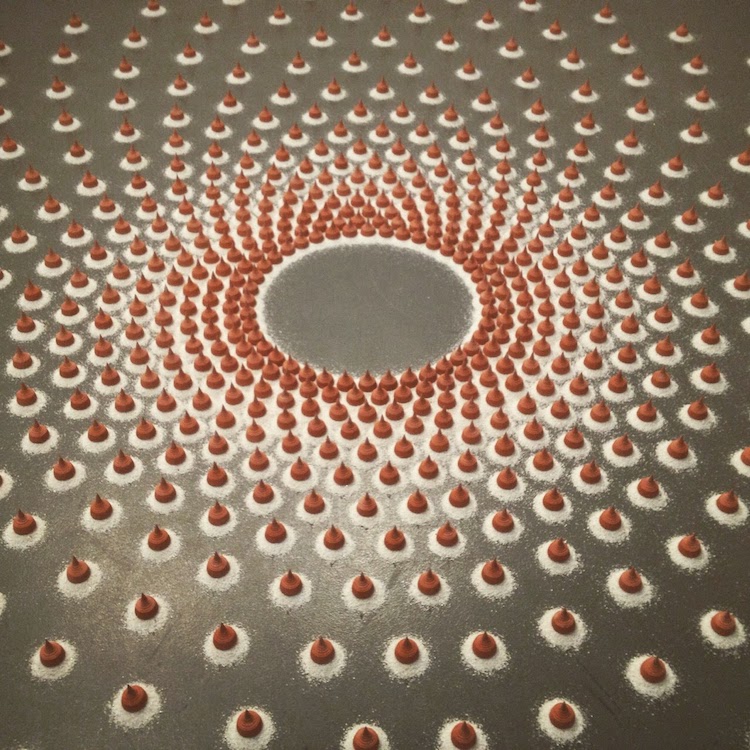Today we bring you the mesmerizing artworks of Indonesian, Kyoto-based artist Albert Yonathan Setyawan. Known for his exalted aggregations of ceramic stupas, Setyawan extrapolates and reinterprets architectural elements and cultural iconography with a contemporary vibe. His works evoke primordial cosmic power, spirituality and meditative self-reflection and contemplation.
“In my practice, I am really interested in exploring human spirituality and religiosity. I have always been interested in meditation practice and have been trying to translate the experience into visual art through pattern and repetition. I am a pattern maniac, repetition freakout, I like patterns and repetitive actions which for many people might be boring. I think that if you engage in a series of repetitive acts, and you keep doing it, letting yourself fall into the process, you’ll end up discovering something deeper than our material existence.”

Albert Yonathan Setyawan, Mandala Study #5, 2015, Terracotta and white marble sand installation, 118.1 x 118.1 x 3.9 inches. Click for larger image
Setyawan manually uses the slip cast technique in handmade plaster molds in order to produce his fragile stupas and geometric forms. He then organizes them into systematic schematics of meditative labyrinths or mandalas.
Centered, repetitious, Setyawan’s conical terracotta stupas often, though not always, originate at a center nexus spiraling outward in a symbolic reinterpretation of the universe. Each form, like an mega-sized grain of sand used by the Tibetan Buddhist monks in their own sand painting practice, will eventually return to earth, ritualistically dismantled—liberated, as seen in his performance art Cosmic Labyrinth: The Bells.
Setyawan explores ways to transcend the structures he so painstakingly creates. His continuous retelling of symbols and reiteration of pattern are the same repetitions found in nature and in our lives, which, the artist asserts, begins and ends with the ephemerality of existence.

Albert Yonathan Setyawan, Cosmic Labyrinth: The Bells (performance), 2012, Ceramic, variable dimension
Setyawan was among five Indonesian artists to present at the 2013 Venice Biennale exhibition in the Indonesian Pavilion. He presented a jaw-dropping walkable labyrinth in Cosmic Labyrinth: The Silent Path. Thousands of stupas were laid out in a square shape reminiscent of the Borobudur temple, the world’s largest Buddhist temple.
ArtAsiaPacific writes a labyrinth, the artist emphasizes, is different from a maze where one can become lost.
Rather, a labyrinth imparts transformation to its visitors by leading them to follow a single, circuitous path that winds to and from its center. Beginning and end are one.

Albert Yonathan Setyawan, Mandala Study #1: Bowls and Bells, 2012, Ceramic bells, thread, wooden beads, stools, incense, variable dimension
For the last several years, Setyawan has been living in Kyoto, Japan, completing his postgraduate studies in ceramics.
Do you love or loathe these works from the worlds of contemporary ceramic art and contemporary ceramics. Let us know in the comments.



















love the work.
transcendent. reminds me of a buddhist sand mandala.